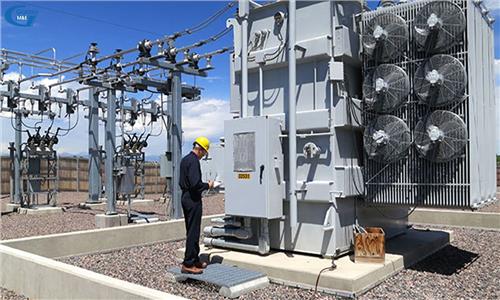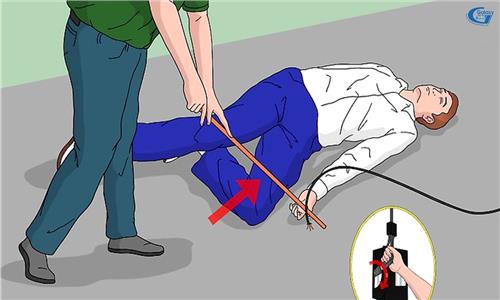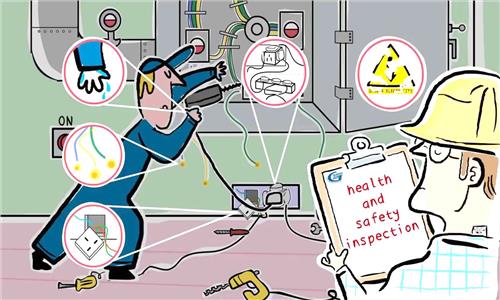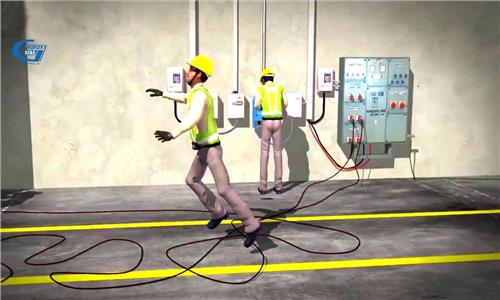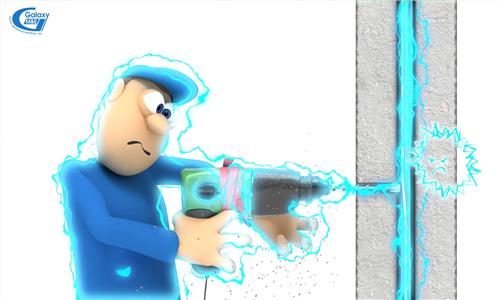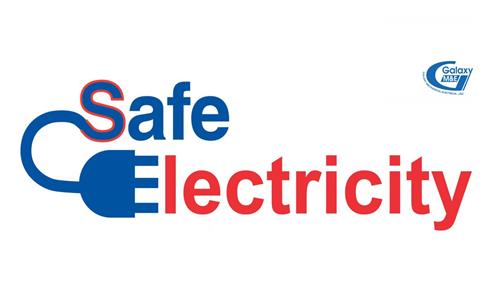The formation of lightning and the impact lightning has on electromechanical works
To prevent lightning for electromechanical works, firstly, both the investor and the electromechanical contractor need to understand what is the cause of lightning, how the lightning is formed, what lightning effects…
In the construction of electrical items, the lightning protection system is an important item, greatly influencing the sustainability of the building in general. Especially with the factory system. With the majority of factory structures connected with large-scale spatial steel assemblies, which is often located in suburbs, where few high-rise buildings can’t absorb the damage that lightning causes due to the quantity of them, this puts factories at a more vulnerable position.
To effectively protect against lightning, firstly, both the investor and the electromechanical contractor need to understand what is the cause of lightning, how lightning forms and what lightning effects... The following article will explain the answer to these questions above from a scientific perspective.
1. Where does lightning come from?
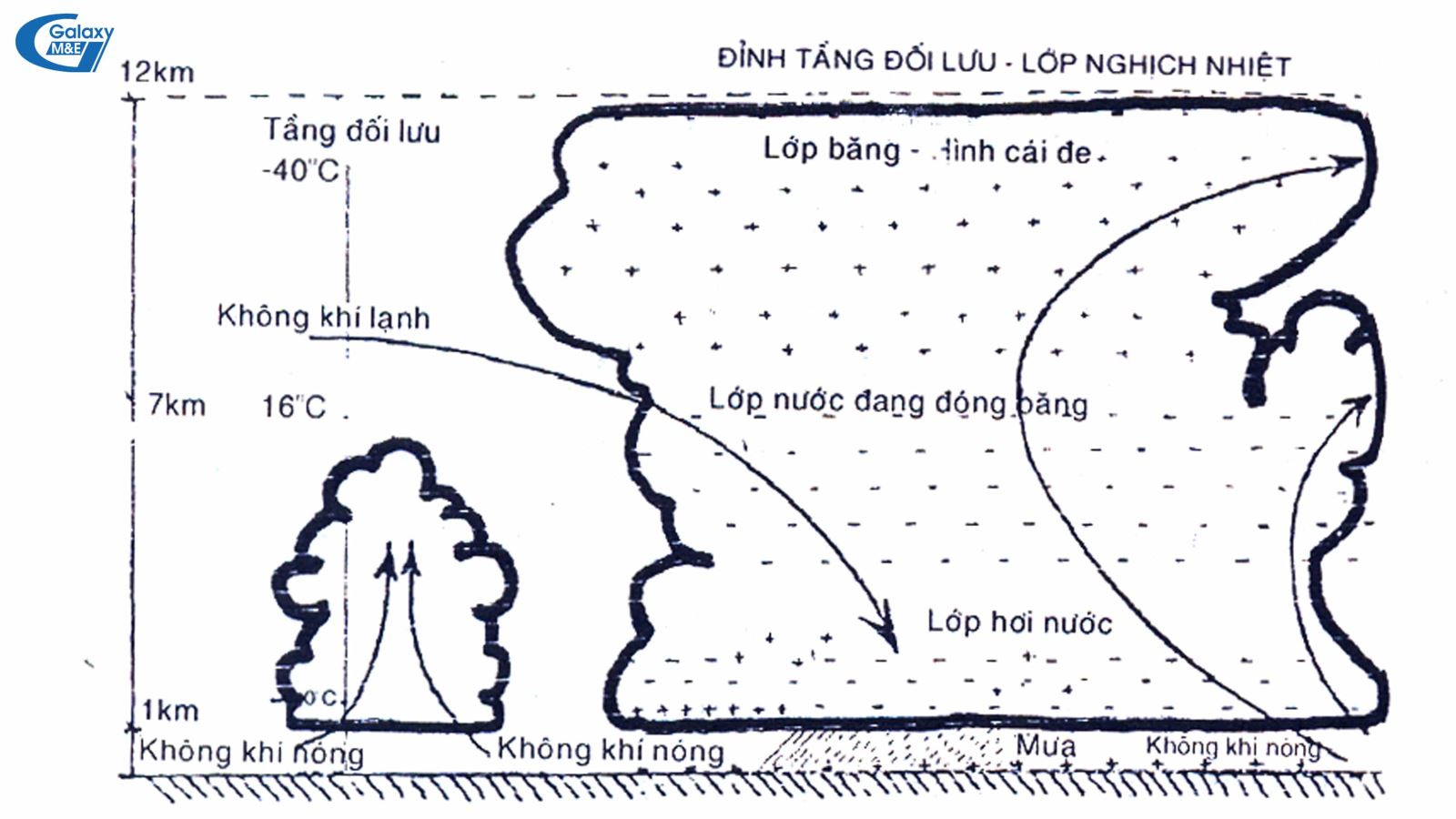
The formation and distribution of electric charge of thunderstorm clouds in the troposphere.
The sun heats the Earth, the humid atmosphere heats up, creating a hot stream of humid air that rises sharply at a speed of 120 m / h. The humid air rises at high speeds, rubbing against each other causing an electric charge in the clouds, a slight positive electric charge is pushed to the top of the cloud, a heavier negative electric charge settles at the foot of the cloud. Thunderstorm clouds have a height of 8 to 12 km, positively electric charged blocks are located at an altitude of 6 to 10 km, and the negatively electric charged blocks are located at an altitude of 2 to 5 km. The foot of the cloudy thunderstorm is approximately at 1 km. Sometimes there is a small area of positive electric charge located at the bottom of the thunderstorm cloud, sometimes there is lightning that is positively charged, but the majority of the time it is negative.
2. What are factors that cause thunderstorm?
Thunderstorms are produced due to atmospheric disturbances, thermodynamics, mainly due to the heat radiation of the sun, creating a seasonal climate. Combined with topography, and geology, which is mainly the resistivity of the land where construction is located.
Hot and humid air in each small area creates strong currents, high speed, meaning that hot air flows upwards causing thunderstorm. The frequency of thunderstorms occurring is relatively small (usually occurs in the summer).
Hot and cold, within the zone of the sphere creates airflow (cold air - hot air). Cold (heavy) air from the North overflows, flows under the hot (light) air at the equator, pushing hot air up and sweeping clouds to create thunderstorms. Thunderstorms have scale up to hundreds of Km (occurs in the North in the fall when it is cold).
During the rainy season, tropical cyclones create low pressure areas. Storm whirls also forms thunderstorm clouds at the edge of the eye, moving from the East Sea, in the West or Northwest direction to the mainland of Vietnam to create tropical low pressure thunderstorms.
Thunderstorms often occur in the tropics. The further away the polar action of the thunderstorm decreases. According to the geographical region at the time of the earth's tilt on its axis of rotation compared to the ecliptic plane, the thunderstorm centers of the world move along the seasonal longitude. At the beginning of the year, the center for most thunderstorms to occur is the tropical North Hemisphere. At the end of the year, thunderstorms move gradually to the tropical southern hemisphere.
3. What are thunderstorm clouds and lightning phenomenon?
Thunderstorm clouds are charged clouds, inducing the ground with an amount of charge opposite to it, giving the thunderstorm and ground an electrostatic field. When the potential gradian between the base of the thunderstorm and the ground reaches 3,106 V / m, it begins to form a strike through the air to the ground - forming clay.
Lightning is the phenomenon of electrical discharge with flashes of lightning (lightning) occurring from thunderstorms in the atmospheric symmetrical stratum to the ground, accompanied by explosive sounds and echoes echoing to the ground or between two thunderclouds with a left charge. sign.
Lightning is also the discharge between the opposite charge centers in the same thunder cloud (blinking) or from the top of thunderstorms to the ionosphere and then transmitted to the beautiful sky to form an electric current to the ground.
4. What does lightning cause?
4.1. Electrostatic induction:
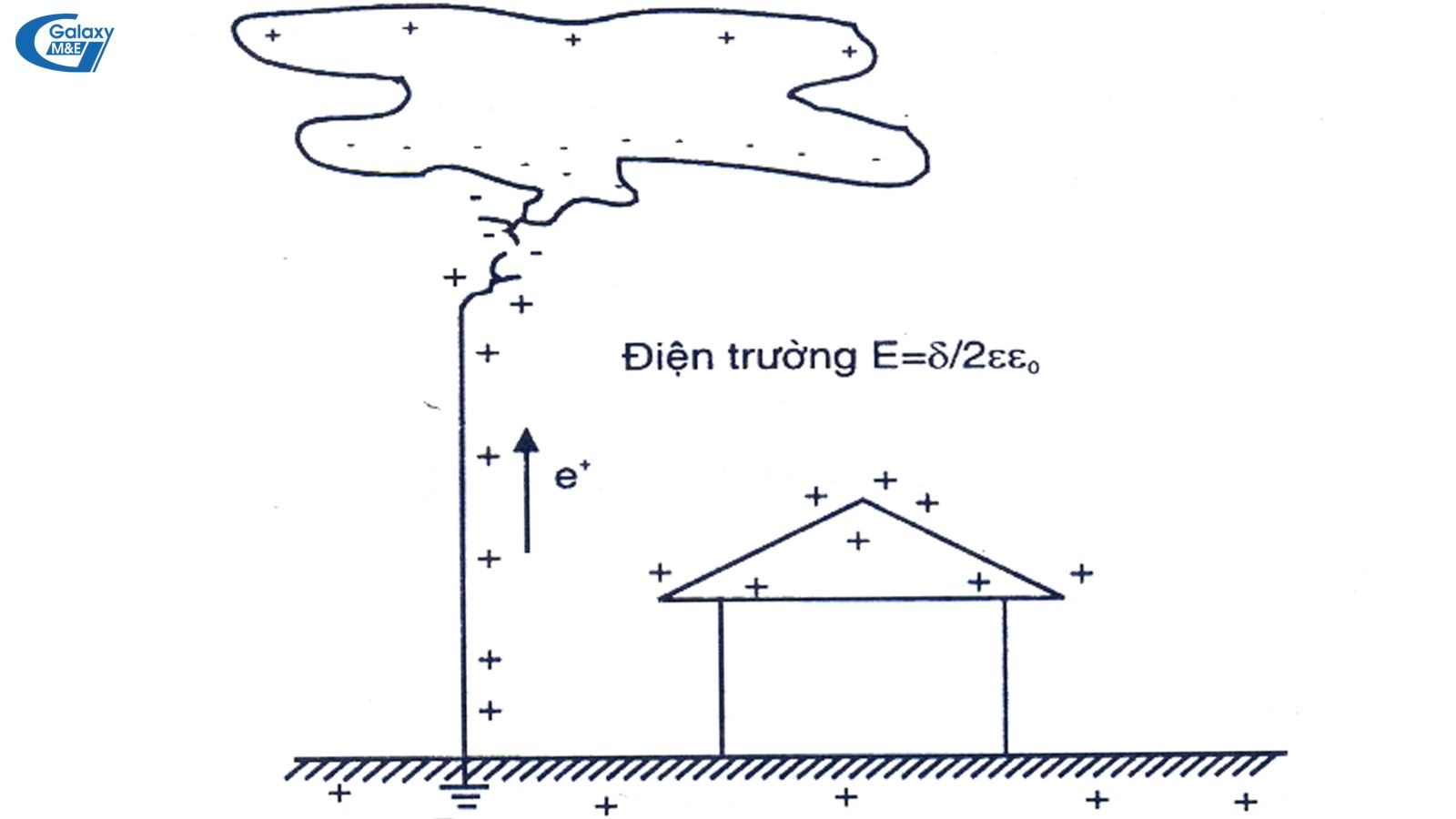
Electrostatic induction to ground before lightning strikes.
When a thunderstorm occurs, there is an electric field between the thunderstorm and the ground. The electric charges (as opposed to thunderstorms) below ground will be attracted and concentrated on the sharp peaks on the ground. If the intensity of the electric field E increases greatly, all the sharp peaks (towers, corners of the roof ...) will release the ray of light.
Lightning will occur at the location of the strongest electric field, where the beam travels earliest and longest to meet the ray leading down from a thunderstorm, creating a channel. The lightning will follow that channel to the ground. To form lightning, there must be a process of concentrating charge.
4.2. Generating currents, tens of kA
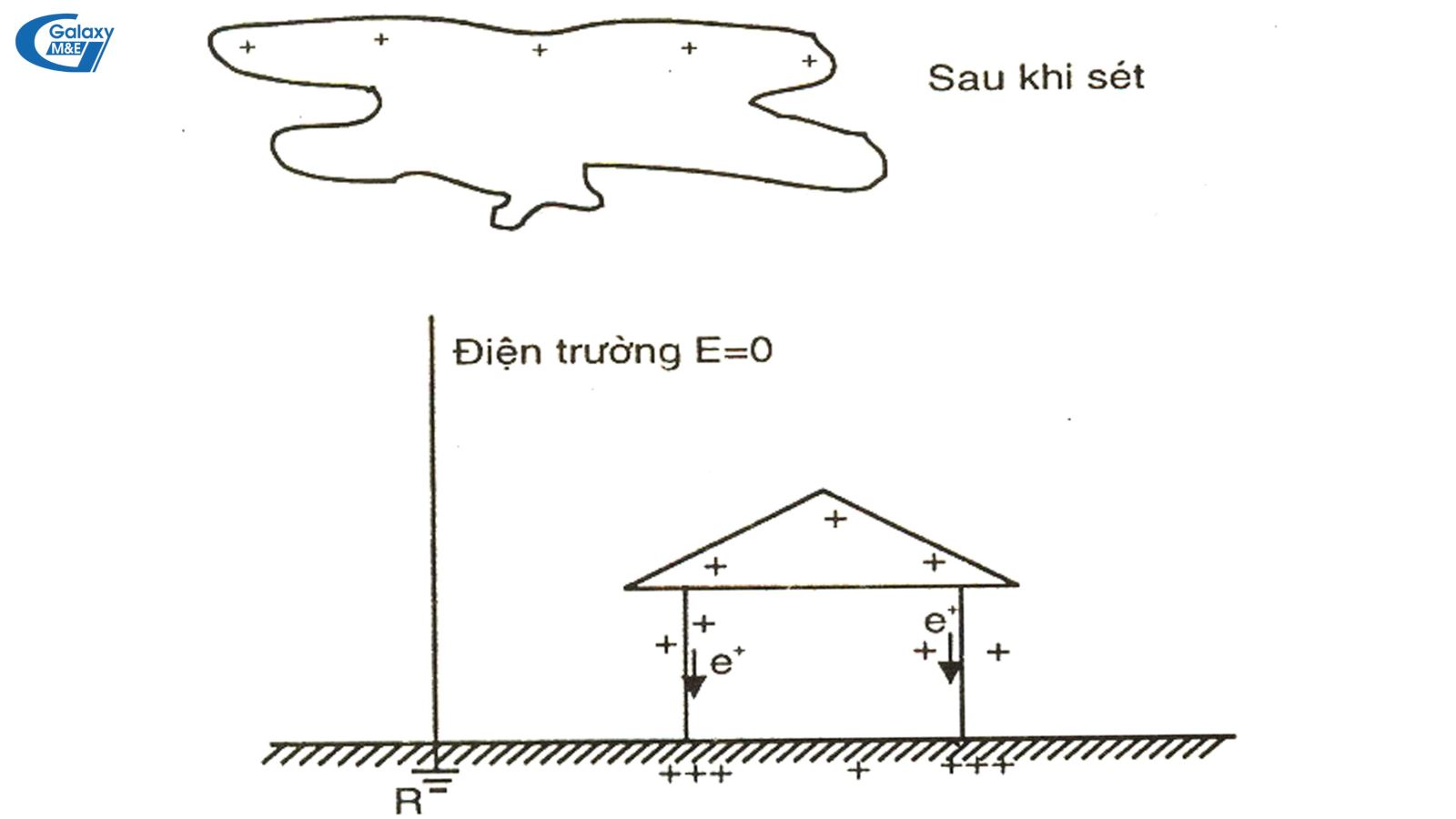
There are consequences of electrostatic induction after lightning strikes elsewhere on the ground.
At this time, the electric field atmosphere of the thunderstorm and ground suddenly become 0 (E = 0). To balance the potential between the high peaks and the lower ground, the induced charges that are attracted to the sharp peaks will rush back to the ground. This creates a high charged current, which is enough to melt vertical steel poles which is reinforced in concrete structures in buildings.
4.3. Voltage of lightning
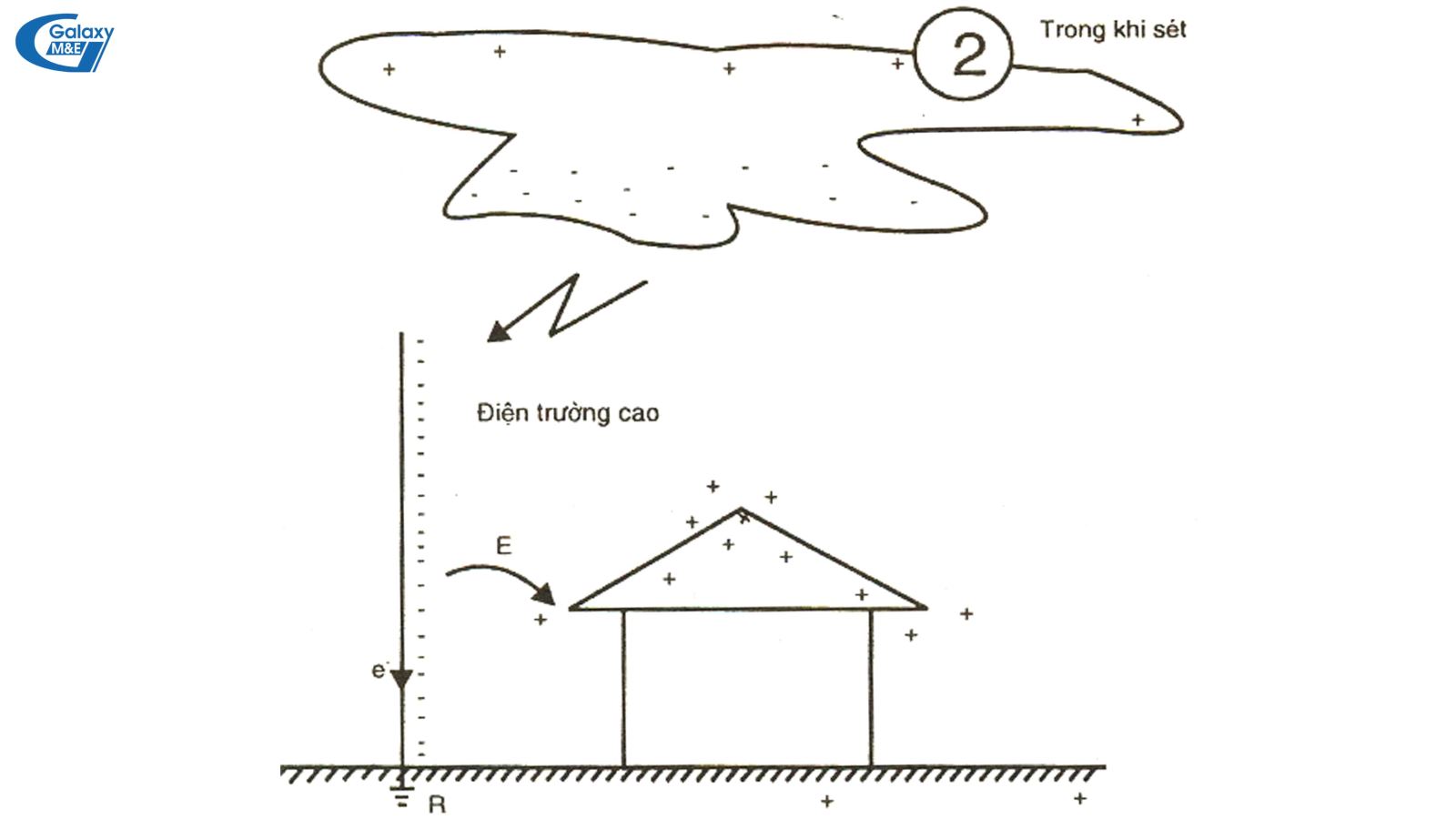
Spillage across high electric fields.
Spillage across high electric fields
When lightning strikes the building, the lightning current will be transmitted along the down-conductor to the earthing system (eliminating the current from lightning). At this time, due to the difference in voltage between, the lightning conductor will create a high enough field to generate secondary discharges - called cross lightning. This voltage is up to tens of kV. Therefore one should maintain a safe distance from the air, ground, lightning conductors and other metal objects surrounding it. The standard minimum distance is 5 m.
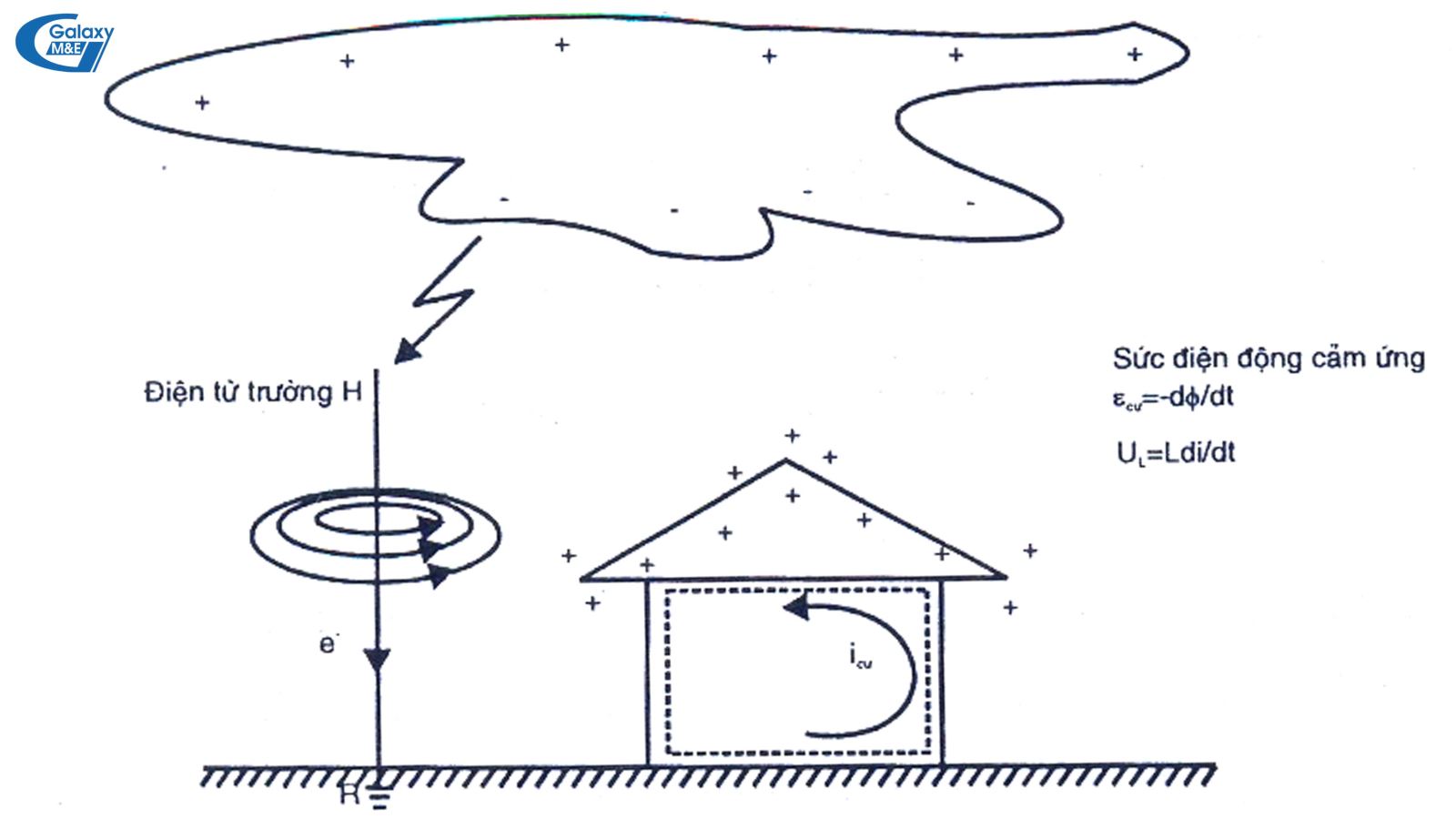
Electromagnetic induction around down-conductors causes secondary discharges in metal loops.
4.4. Lightning impulse currents create a radiation field
When the current created by lightning travels in the downward-conductor cause by the lightning current being the impulse current, its modified magnetic field produces induced electromotive force and induced currents in the loop circuits. Even small currents cause noise. When the induction current is large, it will destroy the sensitive terminal.
When the lightning strikes the ground, the lightning impulse current flows in the downward-conductor creating a source of electromagnetic radiation. The electromagnetic field of the lightning impulse has a radius that can effect thousands of meters. The closer this lightning strike field gets, the stronger it is. The lightning has polarity, so it has negative and positive clay. Lightning is a pulse of current, with 3 to 20 pulses in a lightning strike.
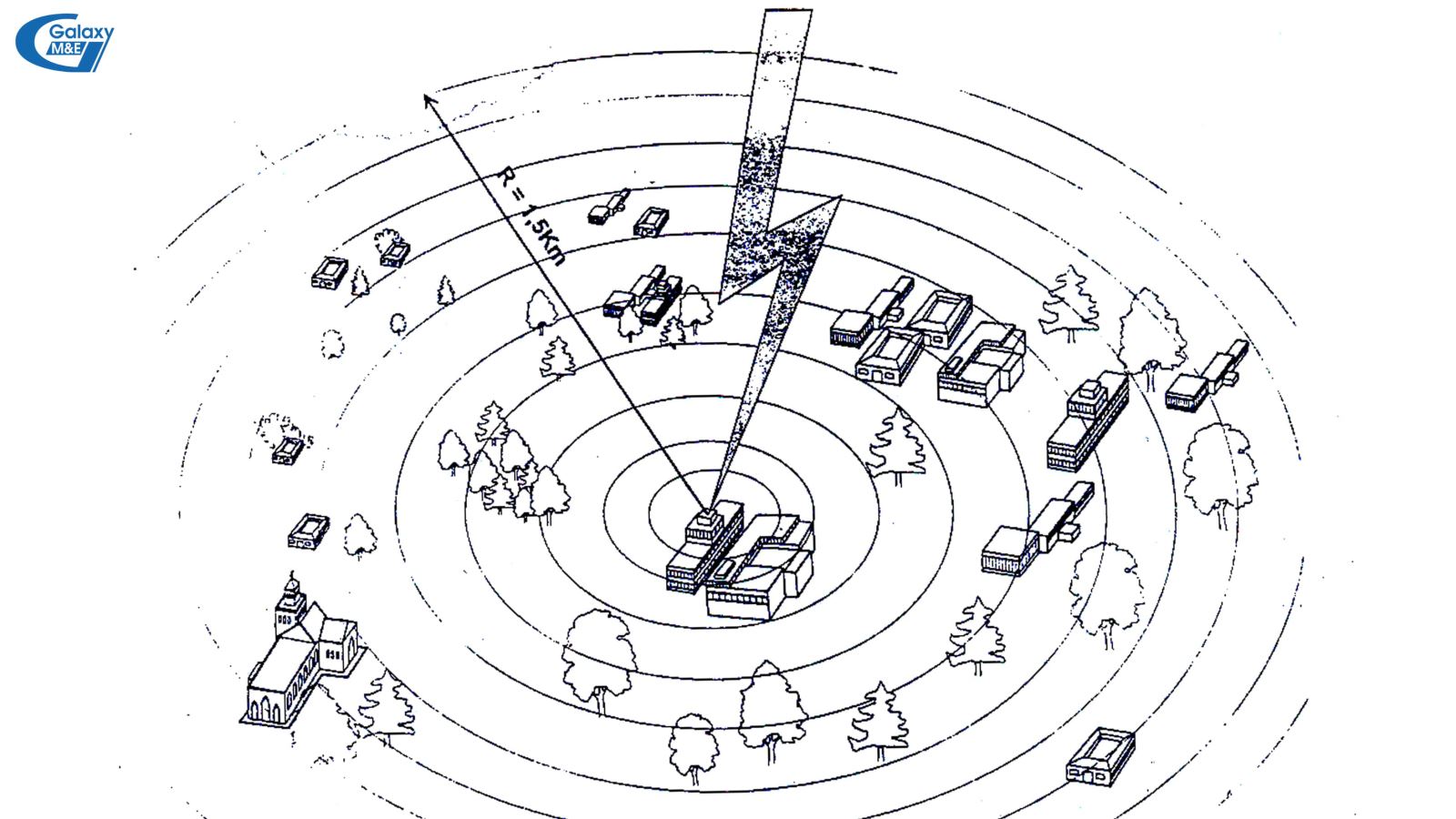
Range of electromagnetic effects of lightning.
5. Is there any way to thoroughly protect electrical works?
Lightning is a potential danger in nature. Until now, in terms of science and technology, humans have not been able to prevent the effects of lightning thoroughly, however, by practical experience, scientific experiments, measurement and monitoring statistics throughout many years. century, humans have greatly reduced disasters that are caused by lightning.
Above is the basic scientific knowledge about the origin, formation and impact of lightning on the environment. This content is intended to support those who are operating in the field of M&E, consulting, designing, building lightning protection systems for works, and supplementing the necessary knowledge for business owners, Especially the group of enterprises engaged in industrial production and construction of tall buildings.
Galaxy M&E




